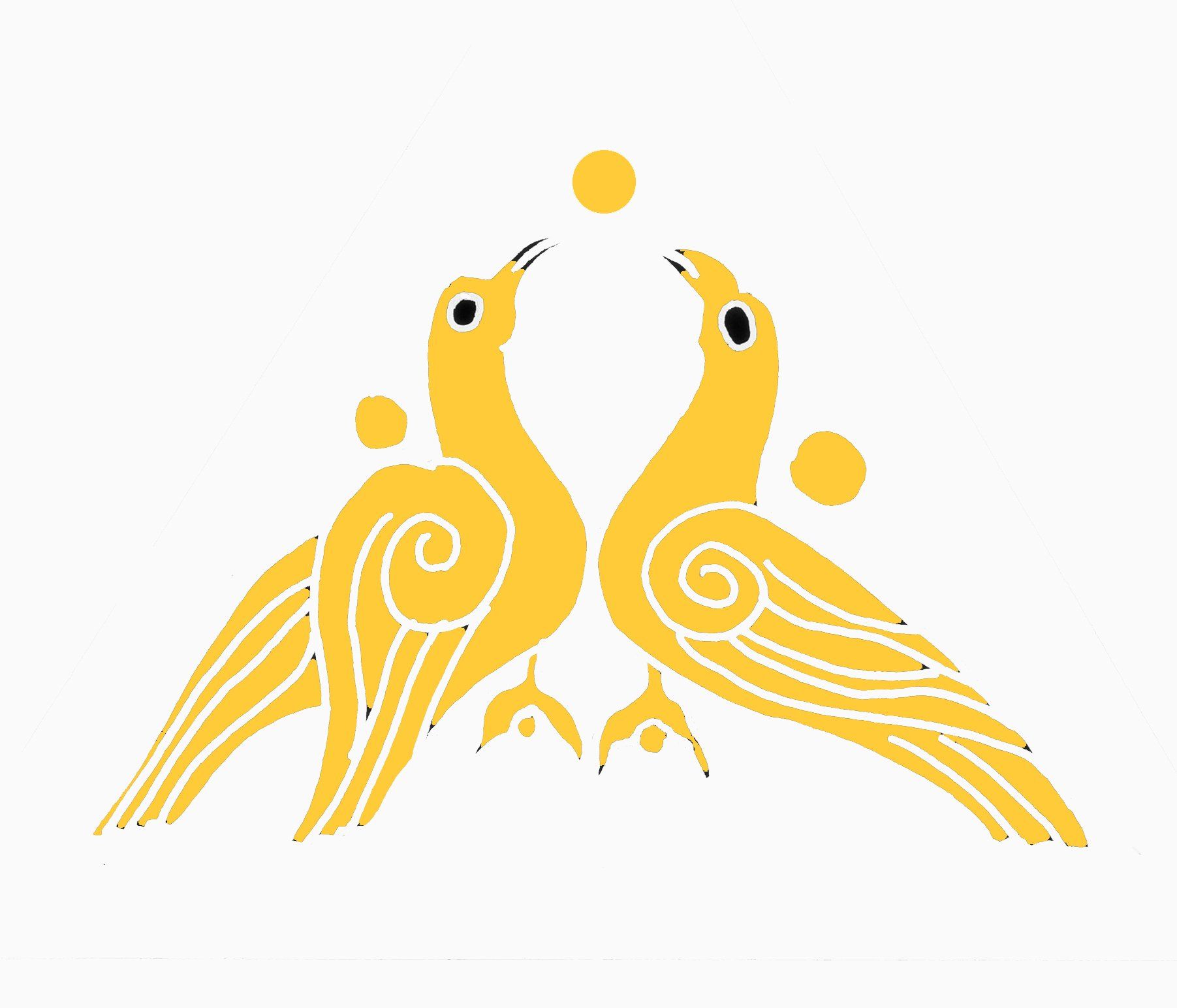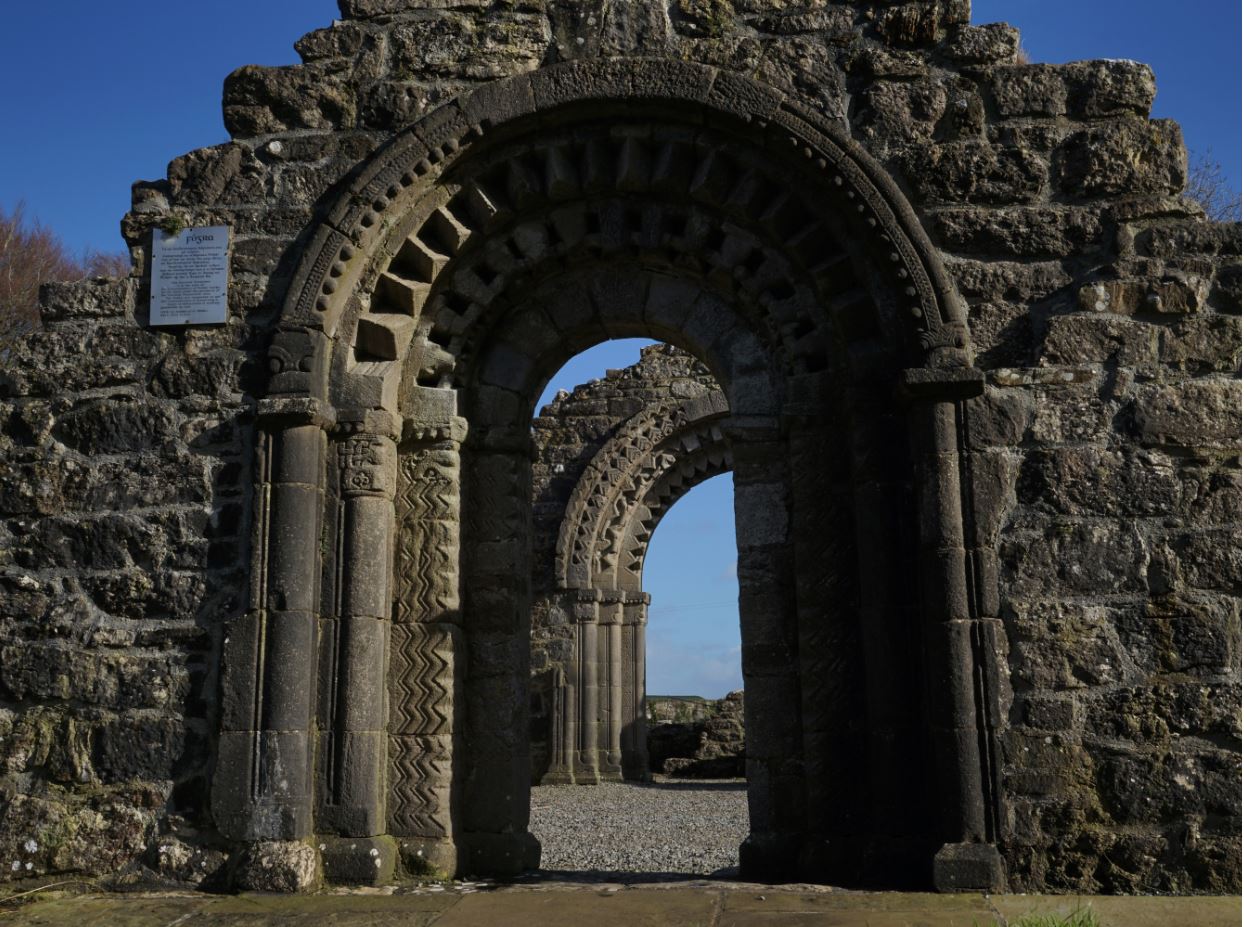1166 - the banishment of Diarmaid Mac Murchadha
The political situation for Diarmaid Mac Murchadha changed dramatically in 1156, following the death of Toirrdelbach Ua Conchobhair, the most powerful king in Ireland for nearly 40 years. He quickly fell out with Toirrdelbach’s son, Ruaidhrí, who instead allied himself with Tighearnán Ua Ruairc and together they focused their attention on the subjugation of Meath. In order to keep his enemies in check, Diarmaid allied himself with Muirchertach MacLochlainn, the most powerful king in Ulster, but when MacLochlainn died in 1166 the path was almost clear for Ruaidhrí to proclaim himself high-king of Ireland. Only one man stood in his way, Diarmaid Mac Murchadha, king of Leinster. However, at this critical moment, Diarmaid found himself without any allies, as one after another the lesser kings of Leinster submitted to Ruaidhrí. Tighearnán Ua Ruairc saw Diarmaid’s newfound weakness as an opportunity to exact revenge. According to one story, Diarmaid disguised himself as an Augustinian monk in a desperate attempt to seek the help of a local king, Murchadh O’Byrne. By the time Tighearnán Ua Ruairc marched into Leinster and attacked his stronghold at Ferns, Diarmaid had fled into exile, apparently sailing away to England near Bannow in south Wexford. Little did anyone know at the time, this was the beginning of a chain of events that would change the course of Irish history forever.
It is curious how history repeats itself. We have already seen how Diarmaid Mac Murchadha’s great grandfather, Diarmaid mac Máel na mBó, tried to assist the sons of Harold Godwinson, the Anglo-Saxon king of England, in the aftermath of his defeat at the hands of William the Conqueror during the Norman conquest of England in 1066. Shortly after the 1101 Synod of Cashel, Muirchertach Ua Briain agreed to provide support to Arnulf de Montgomery and his brother Robert de Bellême in their rebellion against king Henry I of England, and the alliance was cemented by the marriage of Arnulf to Muirchertach’s daughter Lafracoth. In 1165, king Henry II of England hired a fleet from Dublin to assist his military campaign in Wales. This could only have been done with the knowledge and permission of Diarmaid Mac Murchadha. Therefore, when Diarmaid fled Ireland in 1166 he immediately went he search of Henry II in order that this favour might now be returned.
Diarmaid found the English king in Aquitaine, where he was actively consolidating his French empire. With Henry II’s consent, Diarmaid returned to Bristol, where he enlisted the support of Richard de Clare, earl of Strigoil, better known today as Strongbow. Strongbow was out of favour with Henry II. The English estates that he should have inherited from both his father and mother had been retained by the king. Therefore, Strongbow had good reason to undertake an expedition that could result in the acquisition of new estates in Ireland. In order to cement the deal, Diarmaid agreed that his daughter Aoife should marry Strongbow. He then went to St David’s in Pembrokeshire in south Wales, from where he would depart on his return to Ireland. Diarmaid’s decision to visit St David’s is an interesting one. It was here that St Máedhóg, who founded the great monastery at Ferns before his death in 624, had received his training as a young man under St David, the future patron saint of Wales. St Máedhóg was the patron saint and protector of Diarmaid and the Uí Chennselaig of Wexford. Could Diarmaid have been making a pilgrimage to this Welsh church deeply associated with St Máedhóg and seeking his protection before making the return trip to Ireland?
While at St David’s, Diarmaid received more than spiritual support. It was here that he met David fitzGerald, bishop of St David’s, as well as his brother Maurice fitzGerald and their half-brother Robert fitzStephen. Also in their company was their cousin Rhy ap Gruffudd, a Welsh prince of south Wales. Rhy actively encouraged his English cousins to assist Diarmaid, perhaps hoping that their absence in Ireland would weaken the Norman colony in south Wales and allow him to take back much of the Welsh lands that they had taken some years earlier. Diarmaid promised Maurice fitzGerald and Robert fitzStephen the Norse town of Wexford and its surrounding lands if they helped him to recover the kingship of Leinster.
In 1167, Diarmaid arrived back on Irish soil with a small group of Norman mercenaries under the leadership of a Flemish knight, Richard fitzGodebert. They seem to have returned to Wales a short while later, but not before Diarmaid succeeded in re-establishing himself at Ferns. Soon after, he had another encounter with Ruaidhrí Ua Conchobhair, in the company of his arch nemesis Tighearnán Ua Ruairc and Hasculf MacTurkill, the Norse king of Dublin. Diarmaid was forced to pay Tighearnán one hundred ounces of gold as the honour-price for having abducted his wife, Derbforgaill, in 1152. Unbeknownst to Ruaidhrí and Tighearnán, Diarmaid was simply buying time as he waited for an even greater force of Norman mercenaries who would assist him in becoming the most powerful man in all Ireland.



